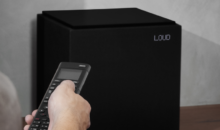Adding a Subwoofer to Your Home Theater
I’ve heard it said that the center channel is the most important used channel in home theater. That’s hogwash. It may be the most used channel in home theater, but the most important (after your left and right speakers, that is) is the subwoofer. When’s the last time you remember someone, after a particularly awesome dialogue scene, turning to you and exclaiming, “Wow! That is an incredible center channel speaker!” If you said, “Never,” then you will understand why I believe the subwoofer is the key to impressive home theater.
So when do you add a subwoofer to your system?
Right away. As soon as you can. Even if you only have a pair of stereo speakers, the subwoofer should be your next purchase It will make more of a difference in a home theater than a pair of surround speakers or a center channel. It doesn’t matter if you watch Pixar movies or episodes of The Walking Dead, a subwoofer brings any soundtrack to life because it puts out the audio that most bookshelf or tower speakers can’t reproduce.
And if your speakers haven’t reproducing that sound (and it’s likely they haven’t), then you are in for a real treat when you first fire up that sub.
So What Size Do I Get?
This is a great question. Adding a subwoofer can be as simple as getting the biggest one you can afford, but there are some subwoofer buying strategies involved as well. For example, two subs are better than one. I’m not kidding, and I don’t make more money if you buy two over one. It’s simply an acoustical fact that most rooms benefit from the use of two different subwoofers summing together to deliver music. It keeps the average peaks lower, producing a more even sound, and it increases overall output potential by splitting the load.
What this has to do with size is that, if you can afford two 10-inch subs, go for that in a heartbeat over a single 12-inch. The exception, of course, is if you are in very tiny room or you simply have to have the lowest frequency response possible. Typically, a 12-inch subwoofer will play anywhere from 3-6 kHz lower than a 12-inch model. That difference, however, isn’t the only thing you look at. You also want enough output.
Subwoofers and Room Size
With subwoofers, what you are attempting to do is essentially pressurize the room. That’s going to be difficult in a room that extends out into a kitchen, or which doesn’t have clearly-defined boundaries or doors. And I’ve just described a majority of homes today, so you’re likely in that boat to some fashion. In the end you want to get a larger sub (or two larger subs) if you have a wide-open space. Anything less, and you will get some usable bass, but you’ll have a very tough time controlling it and getting consistent sound.
Adding the Subwoofer
So adding a subwoofer is a relatively simple process once you decide which you’re getting (and how many). You’ll need to make some adjustments in your AV receiver settings. Here are the basic steps:
- Connect your subwoofer to your AV receiver using the coaxial (RCA) subwoofer output
- Set the volume of the sub (if there is one) to its half-way point
- In the Speaker Setup menu, tell the receiver you have a subwoofer
- Set the crossover for your system to 80Hz if you have bookshelf speakers that do not go down to 20Hz or bookshelf speakers. If you have very small satellite speakers, then set the crossover to 100Hz.
- In the Speaker Setup menu, set the level of the subwoofer using the test tone
- Re-verify all speaker levels
- If you change anything, including any of the subwoofer settings, repeat steps 5 and 6
Conclusion
We have other articles, including one on Getting the Correct Subwoofer Settings, so check that out if you’re not sure what to do once you have your subwoofer added into your system.







When we got our most recent home theatre system, it was imperative that the sound come through as efficiently and powerfully as possible (the room is fairly sizeable and awkward from an acoustical perspective). I really like your idea about featuring 2 subs in the same room. I think that might be my next home project this weekend!
I am currently running dual subs in my modest HT system, and it seems to really help offset room anamolies. Doesn’t eliminate them, but it does decreases nulls and peaks. Better balance and wider sweet spot for low freqs. Smoother dispersion of bass. Good luck. Enjoy.
“With subwoofers, what you are attempting to do is essentially pressurize the room.”
That reminds me of what my Cerwin Vega AT-15s did every time I turned up the ol analog Onkyo High Fidelity tuner. Those babies would blow up Dresses and open doors!